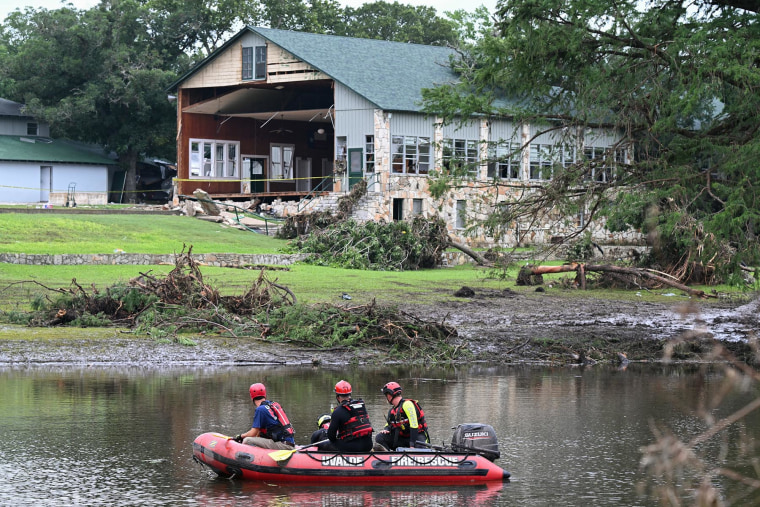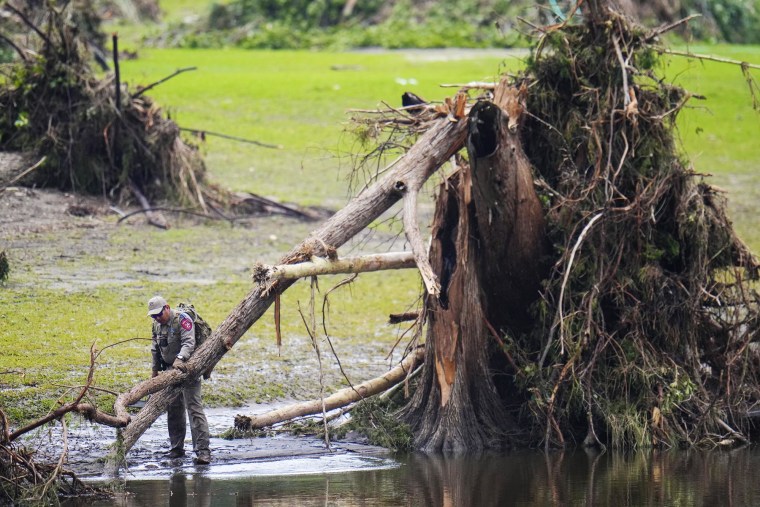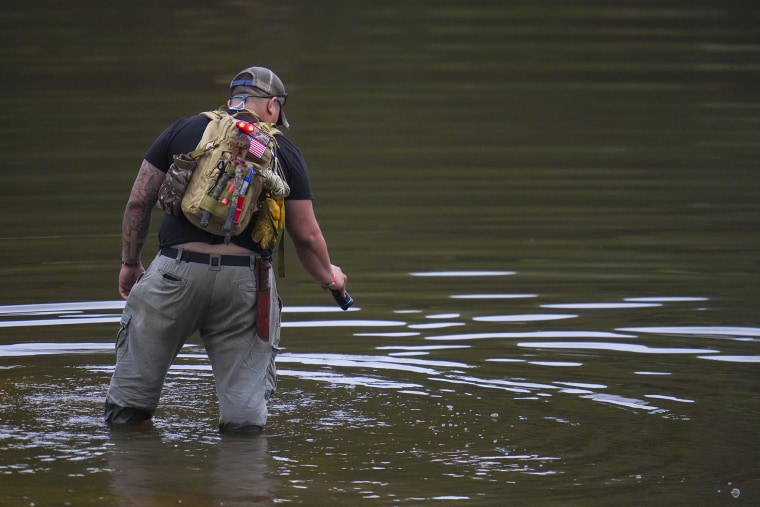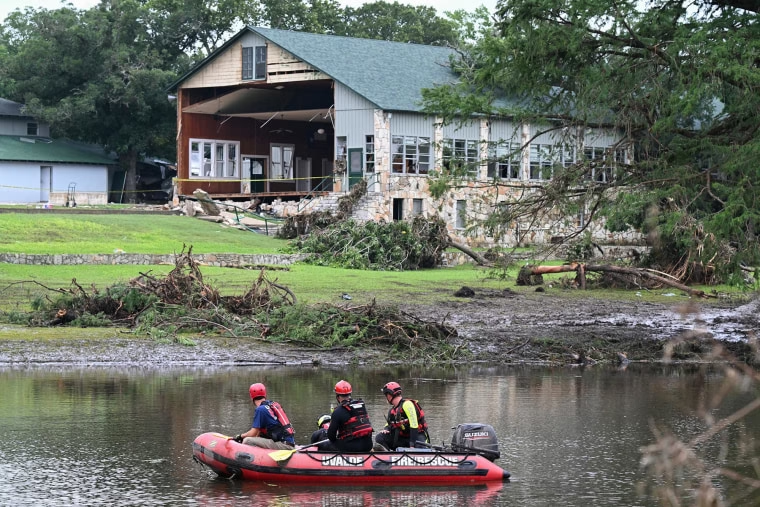Dozens of people have been killed after heavy rainfall brought dangerous flash flooding to Central Texas’ Hill Country region.
Days after Friday’s deadly deluge, first responders continue their search for victims along the Guadalupe River near Kerrville. The river surged by more than 20 feet within 90 minutes on July 4, washing out roads and creating widespread damage.
Follow live coverage here.
A threat remains in the area Monday as slow-moving thunderstorms are expected to bring rain and the risk of more flooding to already-saturated areas, the National Weather Service said. A flood watch remains in place for San Antonio, Austin and Kerr County until 7 p.m. local time.

Here’s what we know about the flooding so far.
Areas impacted
The flooding primarily affected south-central Texas, a region known as the Hill Country. Counties that were severely impacted include Kerr, Travis, Burnet, Kendall, Tom Green and Williamson.
The catastrophic flooding struck Friday with a surge of 20 to 26 feet on the Guadalupe River near Kerrville. President Donald Trump has signed a major disaster declaration for Kerr County, which is west of Austin.

Victims
At least 95 people have been killed across six counties as a result of the devastating floods.
The majority of victims, 75 people, were killed in Kerr County, according to officials. The Kerr County death toll includes 48 adults and 27 children.
Camp Mystic, a 99-year-old Christian summer camp for girls in Kerr County, said on Monday that it was “grieving the loss of 27 campers and counselors.”

Seven people were killed in Travis County, four in Burnet County, and six in Kendall County. Two people were killed in Williamson County, and one person was killed in Tom Green County.
Search and rescue missions are ongoing.
The response
Gov. Greg Abbott declared a disaster for counties across the region: Bexar, Burnet, Caldwell, Guadalupe, Travis, Williamson, Bandera, Coke, Comal, Concho, Gillespie, Kendall, Kerr, Kimble, Llano, Mason, McCulloch, Menard, Reeves, San Saba, and Tom Green.
The president approved a major disaster declaration for the state on Sunday, which was declared by Abbott the day prior.
The U.S. Border Patrol’s Border Search, Trauma, and Rescue (BORSTAR) has been deployed to assist with the recovery effort, according to Border Patrol Chief Tom Homan.
Some Texas officials have been critical of the National Weather Service, saying forecasts underestimated the rainfall that caused furious floods. Independent meteorologists and a former NWS official said the warnings issued in the run-up to the flooding were as timely and accurate as could be expected, given the real-time data available. Predicting extreme rain and flash flooding beyond several hours is challenging, they said, and it is also difficult to ensure that urgent warnings reach those most at risk.
On Sunday, Trump rejected the idea of investigating whether NWS cuts had left key vacancies, and the White House said claims that NWS staffing cuts had anything to do with the tragedy were “disgusting.”
What is to come?
Flood watches remain in effect across central Texas until Monday evening.
Slow-moving and scattered storms are expected to continue throughout the day, resulting in 2 to 4 inches of rainfall, with localized rain up to 10 inches also possible.
Other areas of the country are bracing for heavy rain. Flood watches are in place from eastern Virginia through northern New Jersey, including Baltimore and Philadelphia, as Tropical Depression Chantal moves into the mid-Atlantic. Rainfall of 1 to 2 inches could cause flash flooding in urban areas. On Sunday, Chantal brought flooding to parts of North Carolina, where more than 10 inches was recorded near the Chapel Hill area.
Conditions are expected to improve Tuesday as the stagnant moisture pushes east.









